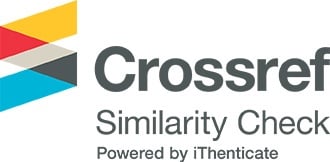Thực trạng kê đơn thuốc cho bệnh nhân đái tháo đường tuýp 2 tại Bệnh viện Thống Nhất năm 2023
Các tác giả
DOI: https://doi.org/10.59294/HIUJS.29.2024.614Từ khóa:
đái tháo đường, tuýp 2, kê đơn, Bệnh viện Thống NhấtTóm tắt
Đặt vấn đề: Người cao tuổi có bệnh đái tháo đường thường được điều trị với nhiều nhóm thuốc khác nhau làm tăng nguy cơ gặp tương tác thuốc. Nghiên cứu khảo sát thực trạng kê đơn thuốc hợp lý theo hướng dẫn kê đơn của Bộ Y tế là cần thiết nhằm xem xét thực trạng kê đơn thuốc trong điều trị đái tháo đường tuýp 2 tại Bệnh viện Thống Nhất. Mục tiêu nghiên cứu: Khảo sát thực trạng kê đơn thuốc điều trị đái tháo đường tuýp 2 tại Bệnh viện Thống Nhất từ tháng 03/2023 đến tháng 08/2023. Đối tượng và phương pháp: Thực hiện nghiên cứu cắt ngang hồi cứu dựa trên đơn thuốc trong hồ sơ bệnh án điều trị người bệnh cao tuổi. Kết quả: Khảo sát mẫu nghiên cứu gồm 400 người cho thấy độ tuổi trung bình là 73.9 ± 8.5, tỷ lệ nữ : nam là 1.31:1, 96.8% bệnh nhân đái tháo đường tuýp 2 mắc ít nhất một bệnh kèm theo. Trong số các bệnh mắc kèm, tăng huyết áp và rối loạn lipid máu chiếm tỷ lệ cao nhất với 87.3% và 72.5% người bệnh. Trong phác đồ điều trị, đơn trị chiếm tỷ lệ cao nhất (54.0%) với insulin và biguanid là 2 nhóm thuốc được kê đơn nhiều nhất (31.5 và 9.2%). Tỷ lệ đơn thuốc kê đơn hợp lý đạt mức 95.8%. Kết luận: Người bệnh cao tuổi đái tháo đường có tỷ lệ mắc bệnh kèm cao và chủ yếu sử dụng phác đồ đơn trị insulin trong điều trị. Một tỷ lệ nhỏ các đơn thuốc không hợp lý với nguyên nhân chính do tương tác thuốc. Vì thế, kiểm soát và giám sát chặt chẽ hơn các tương tác thuốc và theo dõi kỹ tình trạng của bệnh nhân để tránh các biến cố bất lợi trong sử dụng thuốc rất cần được thống kê và báo cáo.
Abstract
Background: Elderly individuals with diabetes mellitus are often subjected to multiple drug classes, thereby increasing the risk of potential drug interactions. A comprehensive analysis of the current prescribing practices, aligned with the Ministry of Health's prescription regulations, is necessary to evaluate the overall status of drug prescription for type 2 diabetes treatment at Thong Nhat Hospital. Objective: Survey the current prescribing practices of type 2 diabetes medications at Thong Nhat Hospital, March to August 2023. Methods: A cross-sectional prospective study was conducted, analyzing the medical records of elderly patients with type 2 diabetes at Thong Nhat Hospital. Results: Conducting a survey on a research sample of 400 individuals revealed that, the average was 73.9 ± 8.5. with a female-to-male ratio of 1.31:1 and 96.8% of patients with type 2 diabetes had at least one comorbidity. Among comorbidities, hypertension and dyslipidemia exhibited the highest prevalence, accounting for 87.3% and 72.5% of patients, respectively. In the treatment of type 2 diabetes sample, monotherapy constituted the predominant approach (54.0%), with insulin and biguanides emerging as the two most frequently prescribed monotherapies (31.5% and 9.2%, respectively). The rate of judicious drug prescription for the treatment of type 2 diabetes at Thong Nhat Hospital is noteworthy, achieving a commendable level of 95.8%. Conclusions: Elderly patients with type 2 diabetes had a high prevalence of comorbidities and mainly used insulin monotherapy for treatment. There was a small proportion of prescriptions that are irrational, with the main cause being drug interactions. Therefore, it is important to carefully monitor drug interactions and closely monitor patient status to avoid adverse drug events.
Tài liệu tham khảo
[1] P. Patel and A. Macerollo, "Diabetes mellitus: diagnosis and screening," American family physician, vol. 81. no. 7. pp. 863-870. 2010.
[2] F. P. Salvatore, "Food, nutrition services and health system management: investigating the cost-disease relationship," 2020.
[3] American Diabetes Association, "Pharmacologic Approaches to Glycemic Treatment: Standards of Medical Care in Diabetes-2021." (in eng), Diabetes Care, vol. 44. no. Suppl 1. pp. S111-s124. Jan 2021.
DOI: https://doi.org/10.2337/dc21-S009[4] Bộ Y tế, "Hướng dẫn chẩn đoán và điều trị Đái tháo đường tip 2." Ban hành kèm theo quyết định số, vol. 5481, 2020.
[5] M. S. Kirkman et al., "Diabetes in older adults," (in eng), Diabetes Care, vol. 35. no. 12. pp. 2650-64. Dec 2012.
DOI: https://doi.org/10.2337/dc12-1801[6] Bộ Y tế, "Quyết định 5481/QĐ-BYT - Về việc ban hành tài liệu chuyên môn “Hướng dẫn chẩn đoán và điều trị đái tháo đường típ 2" " 2020.
[7] A. Fathi, T. Mohammed, O. Eltohamy, and T. Dawood, "Zone Tool: Improving Self-Care and Self-Efficacy among Patients with Chronic Kidney Disease," American Journal of Nursing Research, vol. 8. pp. 608-623. 10/23 2020.
DOI: https://doi.org/10.12691/ajnr-8-6-4[8] P. H. Zhang et al., "Increased risk of cancer in patients with type 2 diabetes mellitus: a retrospective cohort study in China," (in eng), BMC Public Health, vol. 12. p. 567. Jul 28 2012.
DOI: https://doi.org/10.1186/1471-2458-12-567[9] M. Haghighatpanah, G. Thunga, A. Jha, and S. Mallayasamy, "Study on prescribing pattern of anti-diabetic drugs among type 2 diabetes patients with complication in South Indian teaching hospital," vol. 9. pp. 194-197. 08/01 2016.
Tải xuống
Tải xuống: 426











